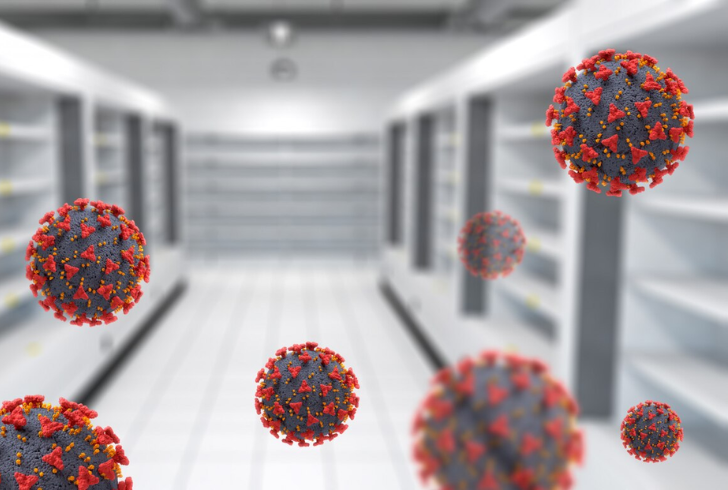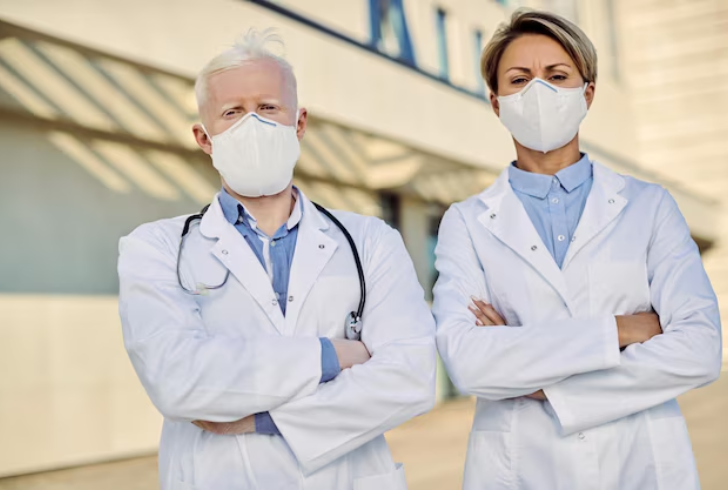Five years after COVID-19 upended daily life across the globe, medical historians still debate its place in history. Unlike past pandemics, COVID-19 leaves a complex legacy, one that intertwines medical advancements, societal changes, and a lasting shift in public attitudes toward science.
The question remains - should it be compared to the 1918 flu, which faded into historical memory? Or is it more like polio, which left a generation dealing with long-term health effects? Perhaps it stands alone as the pandemic that fueled widespread skepticism toward public health measures.
A Pandemic Unlike Any Other
Historians argue that COVID-19 shares characteristics with multiple past pandemics. It resembled the 1918 flu in its high mortality rate and overwhelming presence in daily news. However, like polio, it left behind a significant number of people suffering from long-term health complications, now referred to as long COVID.

Freepik | kjpargeter| Historians compare COVID-19 to past pandemics but say its impact still lingers.
During the height of the 1918 flu, newspapers were flooded with case counts, death tolls, and urgent public health recommendations. Yet, as the crisis subsided, public memory of the flu faded quickly. J. Alexander Navarro, a medical historian at the University of Michigan, noted that there were no national memorials or annual remembrances for flu victims. Instead, the country moved on.
A similar pattern is unfolding with COVID-19. Although its harshest effects have subsided, the virus continues to impact society. While 273 Americans died from COVID-19 in one week of February 2024, this number was significantly lower than the 10,476 deaths recorded in a single week in December 2021. However, interest in prevention has waned. Today, only 23% of adults have received the updated vaccine.
The Long-Term Effects of COVID-19
While many people have returned to normal routines, remnants of the pandemic remain. The shift toward remote work, casual dress, and virtual meetings continues, reshaping work culture. Educational setbacks, financial challenges, and long-term health consequences still affect many communities.
Yet, those who continue to suffer from long COVID face a different reality. Dora Vargha, a medical historian at the University of Exeter, compares them to survivors of past epidemics, such as polio patients who were left dealing with paralysis.
Every pandemic leaves behind a group of people permanently affected. Zika babies born with microcephaly, HIV patients from the 1980s, and tuberculosis survivors all faced long-term struggles. For long COVID patients, their fight for medical recognition, research, and support remains ongoing.
Shifting Attitudes Toward Public Health
Although the world has moved forward, COVID-19 significantly altered public trust in public health institutions. While biomedical advancements earned widespread praise, the social response was far more divided. Kyle Harper, a historian at the University of Oklahoma, described the rapid vaccine rollout as an "A-plus" achievement. However, he graded the overall social response a "C-minus."
Unlike past pandemics, public resistance to basic health measures was unusually strong. Dr. Barron Lerner, a historian at NYU Langone Health, explained that many experts were surprised by the level of pushback against masks, quarantines, and vaccines. In contrast, during the 1918 flu, most people complied with health directives without significant resistance.
Why Did COVID-19 Spark Such Resistance?

Instagram | Drazen Zigic | Experts say public trust is key to handling the next pandemic successfully.
Several factors contributed to the widespread rejection of public health measures:
1. Political Polarization – Unlike in 1918, when health guidance was framed as a patriotic duty during World War I, COVID-19 health measures became politically divisive.
2. Misinformation and Social Media – The rapid spread of misinformation fueled skepticism about vaccines and medical recommendations.
3. Fatigue from Prolonged Restrictions – As the pandemic stretched on, many individuals grew frustrated with continued health mandates.
This distrust may have lasting consequences. Dr. Lerner noted that faith in the scientific process has weakened. He contrasted it with the 1950s polio vaccine rollout, which saw broad public acceptance after successful trials.
Preparing for the Next Pandemic
Public health experts agree that another pandemic is inevitable. The question is whether society will be better prepared or if distrust in medical guidance will make future outbreaks harder to control.
Dr. Harper warns that tackling the next pandemic without public trust would be "the worst possible scenario." Rebuilding confidence in science and medicine will be essential to ensuring a stronger, more unified response when the next global health crisis arises.
